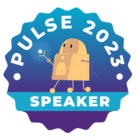Overview
Integrating Net Promoter Score (NPS) within your application represents a paradigm shift towards more dynamic user engagement. Transitioning from traditional email-based surveys to in-app interactions embeds NPS into the user's journey, offering real-time, actionable insights crucial for enhancing customer satisfaction and loyalty.
Understanding the Migration to In-App NPS
The shift from email to in-app NPS collection is transformative, enhancing strategic engagement with users rather than merely changing the feedback medium. This transition requires comprehensive planning around logistics, user experience design, and strategic business alignment.
Strategic Considerations for In-App NPS
- Real-Time Feedback Capture: Capturing feedback while users are actively engaged with the app provides immediate, resonant insights, helping to quickly identify trends and address issues.
- User Journey Integration: It is crucial to map out user journeys to identify the most effective moments for NPS prompts. Strategically placing surveys after significant engagements or milestones ensures the capture of insightful feedback.
- Customization and Relevance: Surveys should be seamlessly integrated into the app’s flow and design to resonate with diverse user needs without disrupting their experience.
Detailed Discussion on Transitioning from Email to In-App NPS
Transitioning NPS from email to in-app involves several strategic and operational shifts:
-
From Periodic to Continuous Insights: Unlike email surveys often sent post-interaction, in-app NPS allows for continuous feedback during user engagement. This shift provides a stream of real-time data that can be more directly and immediately actionable.
-
Increased Response Rates: In-app surveys typically achieve higher response rates compared to email surveys due to their immediacy and relevance to the user’s current activities.
-
Enhanced Personalization: With in-app NPS, surveys can be dynamically tailored based on user behavior and the context within the app, leading to more personalized questions that are relevant to the user’s specific experiences.
Planning Questions for Effective In-App NPS Integration
-
What are our key objectives for integrating NPS within the app?
- Clear objectives—whether to improve product features, customer service, or overall satisfaction—are essential to guide the NPS strategy, influencing both survey design and timing within the user journey.
-
How will we tailor the NPS to meet diverse user needs?
- Given the varied user interactions within the app, NPS surveys must be customized to gather relevant feedback from different segments, potentially involving varied surveys based on user roles, functions, or stages in the customer journey.
-
How will NPS insights be integrated into broader business strategies?
- Integrating NPS feedback into broader strategies is crucial and involves setting up processes for rapid response to feedback and ensuring that insights inform product development, marketing, and customer support enhancements.
-
What metrics will define the success of our in-app NPS initiative?
- Metrics should extend beyond the NPS score to include user retention rates, satisfaction improvements, and resolution times for issues, measuring the impact of NPS feedback on the overall user experience and business outcomes.
Launching NPS: A Rocket Ship Analogy
Introducing NPS within an app can be likened to launching a rocket, involving stages that progressively build upon each other to reach new heights of customer insight and engagement.
Stage 1: Ignition
- Objective: Establish the basic functionality of in-app NPS to a select group of users to gather initial data and insights.
- Activities: Develop a minimally invasive, well-integrated NPS interface. Pilot this feature with a segment of power users to refine the approach based on initial feedback.
- Indicators:
- Leading: User interaction rates with the NPS prompt.
- Lagging: Initial NPS scores and qualitative feedback quality.
- Key Questions: Are users engaging with the NPS prompt? What immediate feedback are we receiving about their app experience?
Stage 2: Ascent
- Objective: Expand the reach of NPS functionality, optimizing the timing of surveys and refining questions based on early data.
- Activities: Implement the NPS feature across the entire app, using insights from the ignition stage to enhance question relevance and timing. Start segmenting users based on behavior to tailor the NPS questions further.
- Indicators:
- Leading: Increase in completion rates of surveys, improvements in user interaction post-survey.
- Lagging: Enhanced NPS scores, quality and usability of feedback for actionable improvements.
- Key Questions: How have adjustments from the initial data impacted overall user satisfaction? Are there emerging trends in the feedback that guide further enhancements?
Stage 3: Orbit
- Objective: Fully integrate NPS into the app’s ecosystem, leveraging advanced analytics and personalized follow-ups to create a continuous loop of feedback and improvement.
- Activities: Use sophisticated data segmentation to deliver highly personalized NPS surveys. Implement automated actions based on specific feedback types, such as instant support messages for detractors or appreciation messages for promoters.
- Indicators:
- Leading: High engagement rates with personalized actions, increased frequency of high-value user actions post-feedback.
- Lagging: Sustained improvements in NPS scores, evidence of long-term user satisfaction and retention.
- Key Questions: Are the NPS insights effectively used to drive continuous improvements? What impact does this have on user loyalty and overall app stickiness?
Conclusion
Integrating in-app NPS is a continuous journey towards deeper customer insights and enhanced user engagement.
To successfully scale these efforts:
- Institutionalize feedback processes to make them a routine part of the user experience. Utilize automation to efficiently manage data collection and analysis, ensuring feedback is timely and actionable.
- Foster cross-functional collaboration to ensure insights influence all areas of your business, from product development to customer support.
- Continuously evaluate the impact of NPS on business goals like user retention and satisfaction, and integrate these insights into your strategic planning.
This holistic approach will not only improve user experiences but also align them closely with your business objectives, maintaining a competitive edge in a dynamic market environment!



